The Mobile CPU Core-Count Debate: Analyzing The Real World
by Andrei Frumusanu on September 1, 2015 8:00 AM EST- Posted in
- Smartphones
- CPUs
- Mobile
- SoCs
Chrome - BBC Frontpage
The little core data doesn't look much different than what we saw on the AnandTech frontpage. The little cores see a consistent high load, with a fairly large peak towards the main rendering phase of the page.
Chrome again seems to cause the system to spawn more threads than what the little cluster can accomodate.
The big cores also behave similarly to what we saw on the AnandTech front-page. There's a consistant load of a single large thread with some bursts where up to all 4 CPUs are doing some processing.
The total run-queue depths for the system again confirm what we saw in the previous scenario: Chrome is able to consistently make use of a large amount of threads, so that we see use of up to 6 CPUs with small bursts of up to almost 9 threads.
What is interesting about the Chrome results is that most of the threads are placed on the little cores, meaning we have a large amount of small threads. Because the migration mechanisms of HMP don't migrate threads below a certain performance threshold, this causes some oversaturation of the little CPU cluster.
This is an interesting implication for non-heterogeneous 8 core designs such as seen from MediaTek. In such a scenario having 8 little cores at more or less the same performance capacity would indeed make quite some sense. It's again MediaTek's X20 design with 2 clusters of 4 cores and a cluster of 2 high performance cores which comes to mind when looking at these results, as I can't help but think that this would be a use-case which would make perfect sense for that SoC.


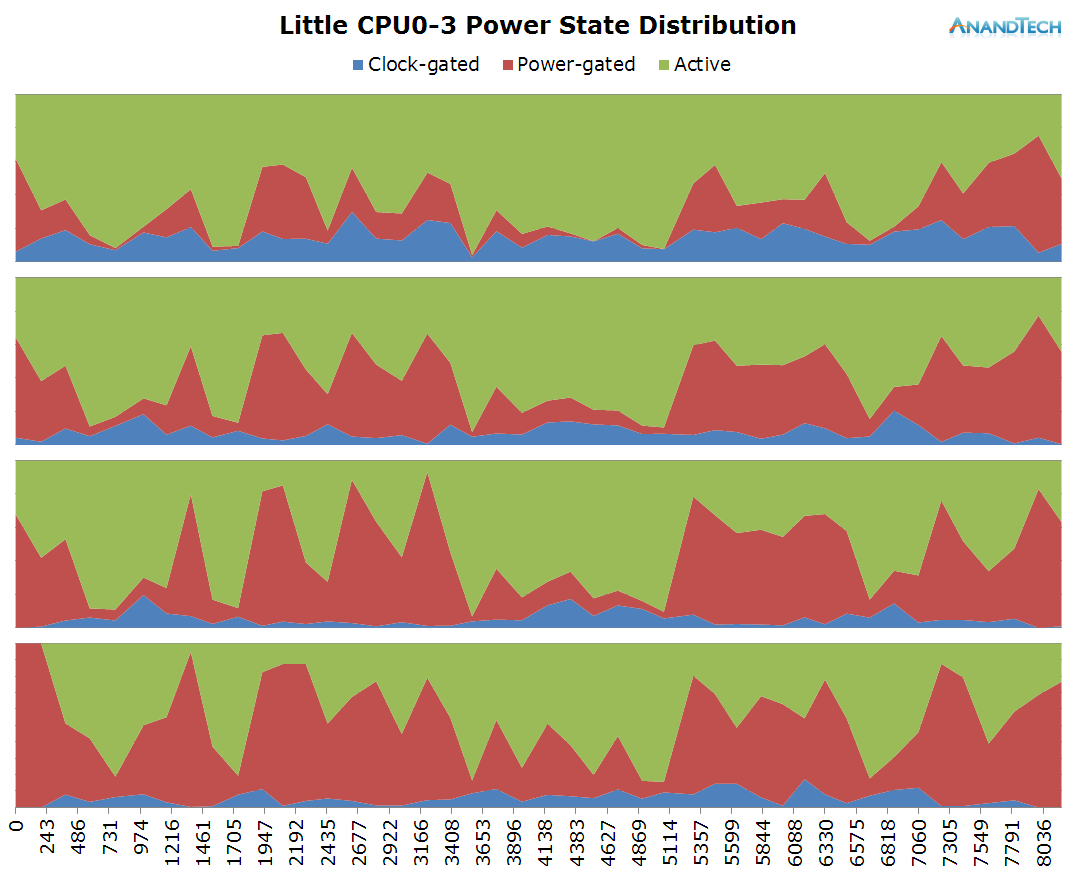
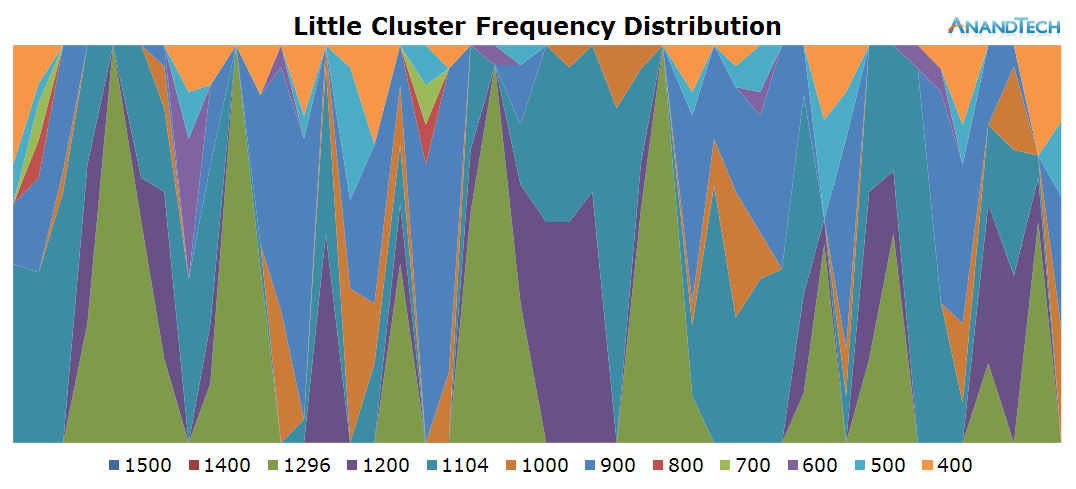
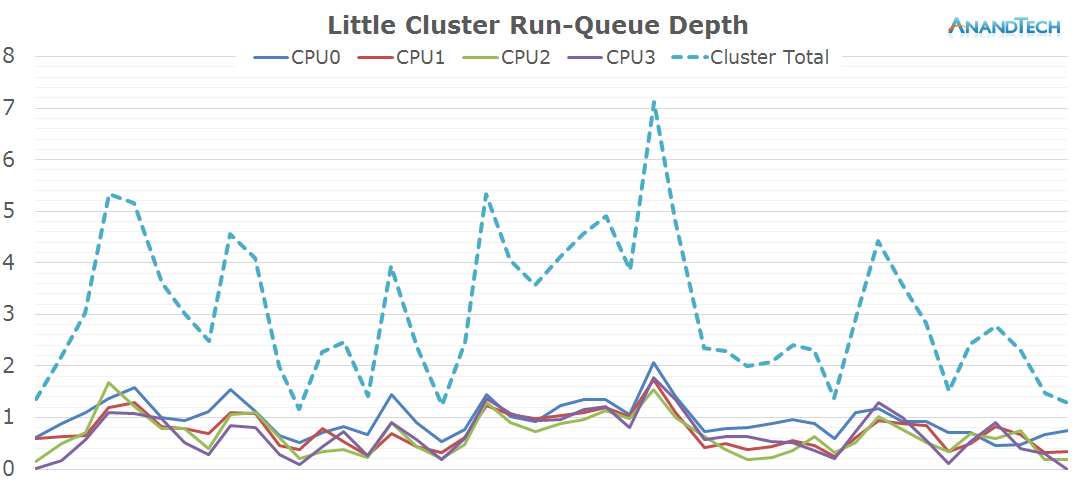
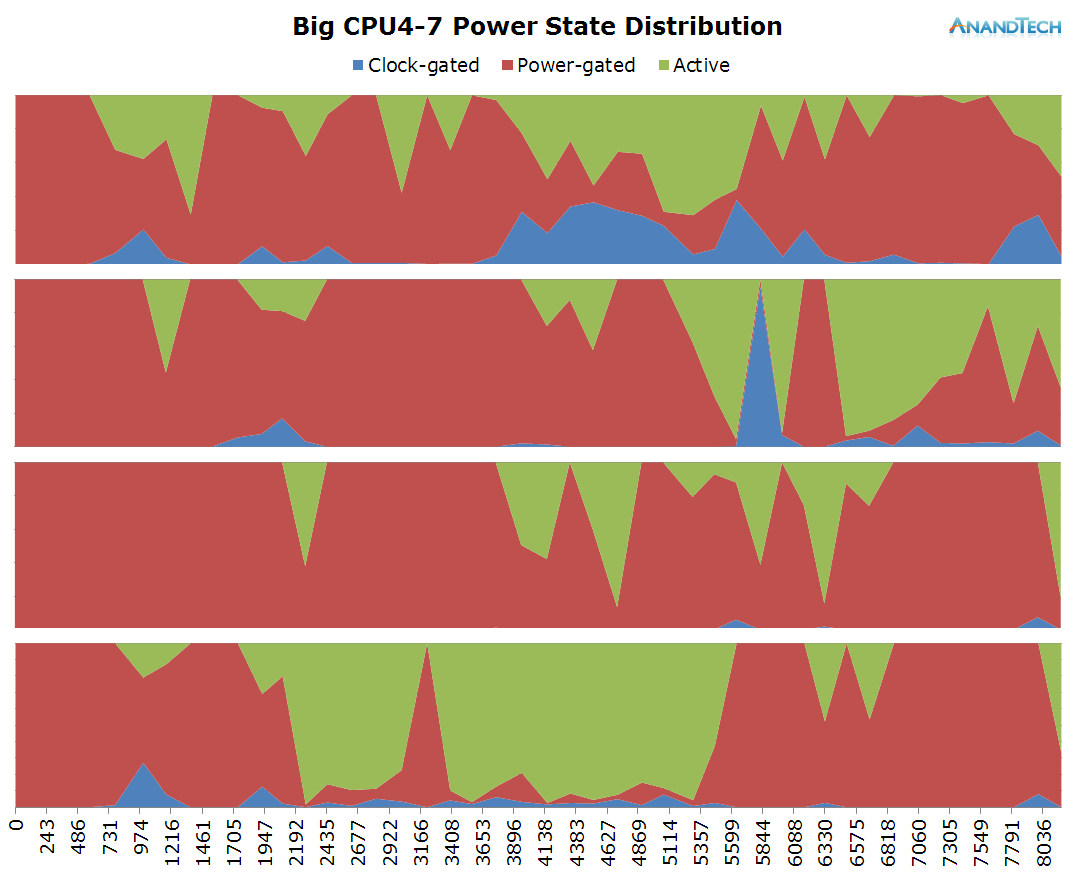
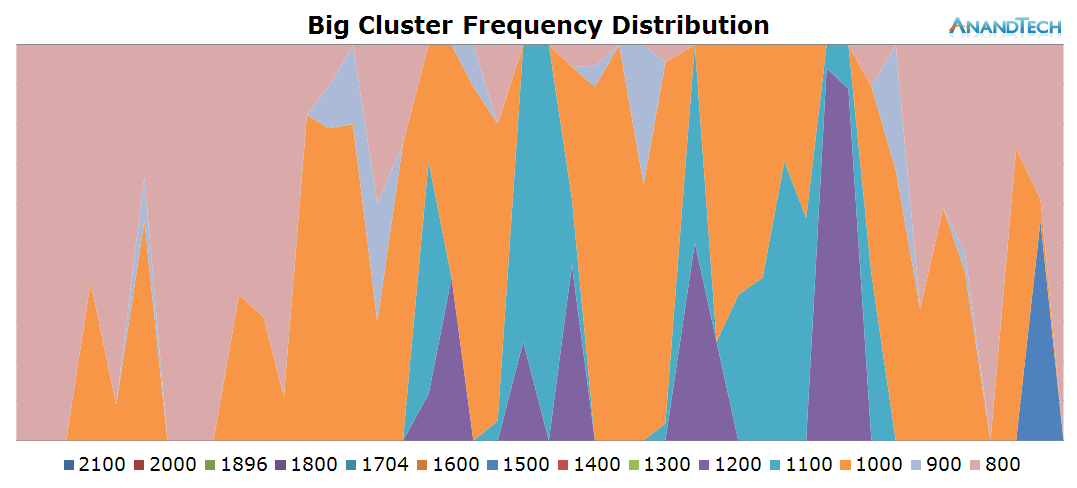
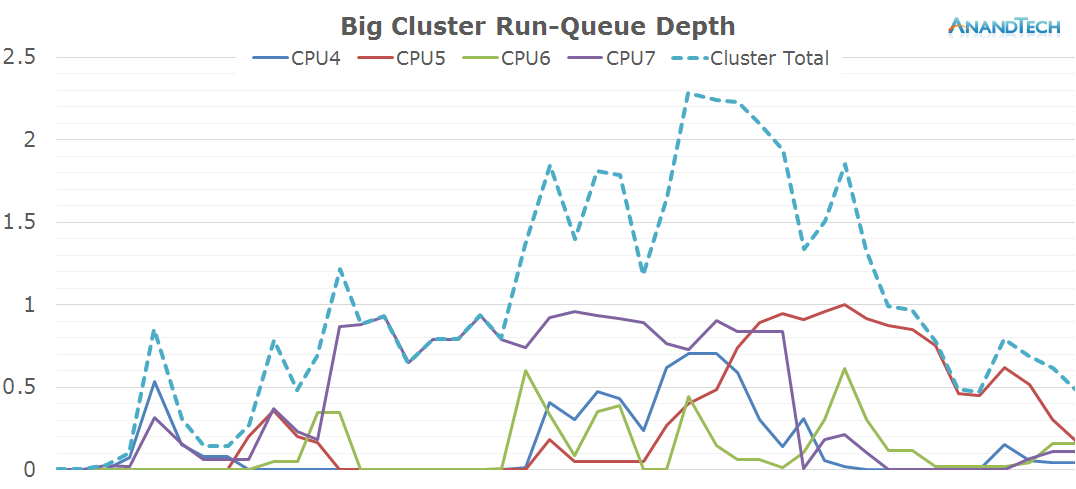
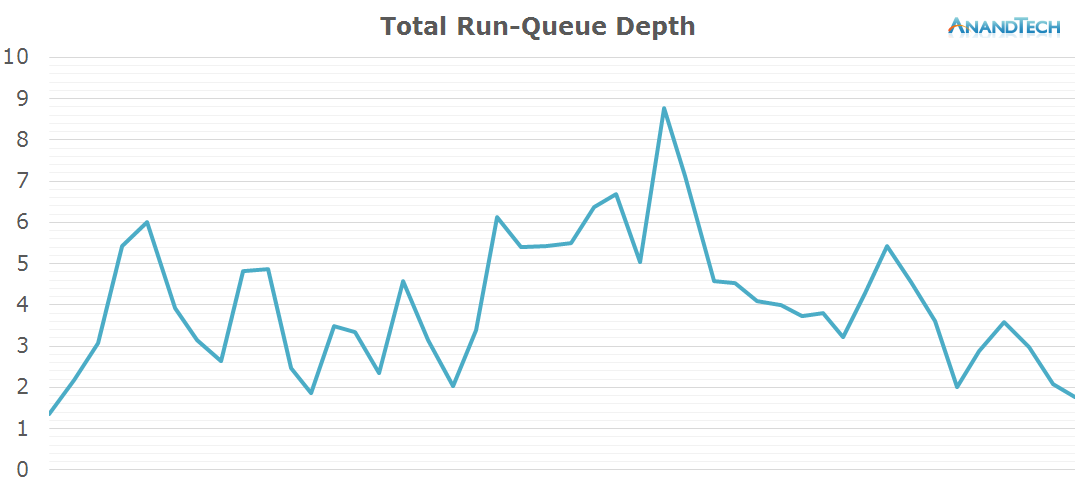








157 Comments
View All Comments
TylerGrunter - Tuesday, September 1, 2015 - link
In fact you are in the right place to ask that question, as one of the profets os the mantra was Anand Lal Shimpi himself:http://www.anandtech.com/show/7335/the-iphone-5s-r...
Quoting from the article:
"two faster cores are still better for most uses than four cores running at lower frequencies"
You can read the rest if you are interested, but that´s how much of the mantra started.
retrospooty - Tuesday, September 1, 2015 - link
I wont hold that against Anand, he was lobbying toward a job at Apple ;)But seriously, it was 2 years ago. At that time ""two faster cores are still better for most uses than four cores running at lower frequencies" may well have been the case. Also, no matter how you slice it, an 8 core big.little is not a true 8 core CPU. It's really still 4 cores.
retrospooty - Tuesday, September 1, 2015 - link
/edit. I do remember alot of people crying "you dont need 8 cores" but again, that was people misunderstanding ARM's big.little architecture made worse by marketing calling it "8" cores" in the first place.TylerGrunter - Tuesday, September 1, 2015 - link
I agree with you, and he may not have been THAT wrong at the time. But with the current implementations of power gating and turbos most of what he said has been rendered false.AFAIK, big.LITTLE can be a true 8 core, it actually depends on the implementation.
lilmoe - Sunday, September 6, 2015 - link
"Also, no matter how you slice it, an 8 core big.little is not a true 8 core CPU. It's really still 4 cores."An 8 core big.LITTLE chip running in HMP mode (like the Exynos 5422 onward) is in fact a "true" 8 core chip in which all 8 cores can be running at the same time. You're thinking core migration and cluster migration setups in which only 4 cores (or a combination of 4) can be running at the simultaneously.
lilmoe - Sunday, September 6, 2015 - link
"can be running at the simultaneously."*corrected: can be running simultaneously.
osxandwindows - Friday, September 25, 2015 - link
If i run all 8 cores at the same time, wood it affect battery life?mkozakewich - Wednesday, September 2, 2015 - link
If the option is really four weak cores or two powerful cores, I think the two powerful ones would make a better system. If we could have two powerful cores AND four weak cores, that would be even better.So I think he was probably justified.
mkozakewich - Wednesday, September 2, 2015 - link
Just everyone who's easily influenced, really. I heard it from pretty much everyone. Someone I was talking to apparently "knew someone who designed a Galaxy phone." He claimed they wanted to design it with two cores, or something, but the marketers wanted eight.StormyParis - Tuesday, September 1, 2015 - link
Very interesting, thank you.